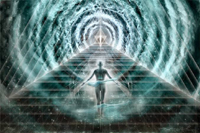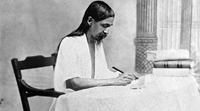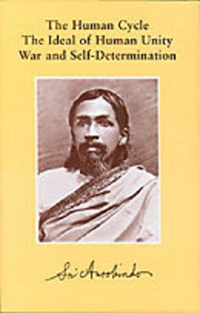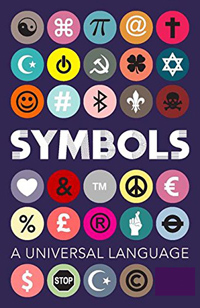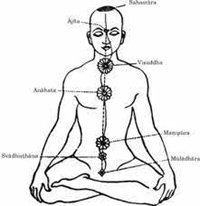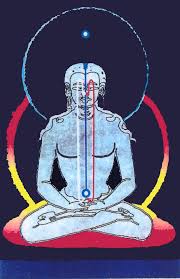Consciousness and health
The symbolic and the subjective
Abstract
We are poised to enter a new age in our social evolution — the subjective age — that will bring the spiritual and psychic realms to the forefront. Our earliest stage of development was the symbolic age that came from the mystic core of our being. Then came the typal and conventional ages, where the truth was gradually lost, and the outer husk remained. The subsequent rational age did away with ritual and superstition. It brought in the light of the objective world. All subjective claims were subjected to the scientific method. But not all truths can be grasped using the rational mind. The inner pressure of the psychic being and the spiritual pressure from above are cracking it open. The new subjective age that is dawning will resuscitate the symbols and integrate them into itself. This article looks at the symbols in our lives, how they have changed over time and how they are being assimilated by the subjective age.
The symbolic age
The earliest wisdom literature of India, the Vedas, are recondite texts because the Vedic rṛṣis used symbolic language instead of direct speech. They cannot be analysed with reason as they are a creation of the pre-rational age, the first age of man, called the symbolic age. The etymology of words and the meaning of some cryptic verses have been scrutinised by many linguistic scholars, spiritual practitioners, cultural commentators and modern rṛṣis. Let us take for example the word ‘go’. It means light, and also the cow. When discussing the hymns on the herds of the dawn in his, The Secret of the Veda, Sri Aurobindo says this about ‘go’:
“As a matter of fact it is evident that we are meant to take the word in a double sense, ‘light’ as the true significance, ‘cow’ as the concrete image and verbal figure (1).”
If we consider the primary meaning of ‘go’ to be the nurturing, fulfilling, enriching principle, the two meanings are not forced any more — both light and the cow nurture us. The word ‘go’ has a derivative meaning — ‘knowledge’, as knowledge makes us grow. We shine the light to dispel ignorance. The names of gods are also symbolic in the Vedas. Later ages have woven stories around them. For example, after a long adventure, the lord of Mind, Indra, gets the name Sahasrāksa — the thousand-eyed one. But the Vedas used this name when they wanted to indicate the mind’s power of gathering knowledge from all sides. When the context needed a god who is a concentration of mental energies, they used another name of Indra — Maghāvan. Every name has a deep psychological meaning. Similarly, every synonym is used deliberately — aśva for horse to indicate life-force, and vajin when speed is the desired attribute. Over time this subtlety of expression was lost on the readers. Much later, scholars like Sri Aurobindo decoded the symbolism and revealed the wisdom that is hidden in these texts.
Other ancient civilisations too began with the image, the metaphor and the symbol as the grammar of truth. These are the hieroglyphics of Egypt, the pictograms of the Mayan people, the Chinese script, and the divinations derived from various formations, such as turtle shell patterns, and the position of planets. Symbols are powerful and concise. Yantras and bīja mantras are examples of these powerful symbols. Symbols speak directly to the intuitive mind. They can therefore seem cryptic to the rational mind. Not everyone is supposed to understand symbols. By its very design, a symbol has two meanings. One for the advanced student, one for the lay person. It helps the adept but does no harm to the lay person.
Subsequent ages of man
With the passage of time, the symbolic literature of the ancient wisdom texts became conventionalised until the secret was lost and only the mundane meaning remained. Then came the individualistic age, which erased the symbols and replaced them with direct non-metaphoric speech. Man’s source of knowledge came from outer instruments, such as the thermometer and the telescope, instead of the inner instruments, as was the case during the symbolic age. The ‘inner instruments’, called the antahhkaranna in Sanskrit, are these four — citta, manas, buddhi and ahaṃkāra. The citta is the basic consciousness that plants and metals also possess; the manas is the interpreter of sense impulses; the buddhi is the intellect, which includes reason and creativity; and the ahaṃkāra is the ego, the sense of the bounded individual self.
In the individualistic age, which is the rational age, knowledge is not what the senses report, or what the sense-mind interprets it to be. The sun does not go around the earth even if it is experienced every day to do so, because the telescopes and calculations say otherwise. The focus has shifted from the experiencer to the observed fact. The subject does not matter, the object is the primary source of truth. Whatever outer instruments report are universal truths, applicable to all of humanity, for all time.
This age lasted until science admitted the limitation of outer instruments when it stumbled upon the atomic world. Quantum mechanics shifted the belief from certainty to probability. High speeds and large distances in space showed the relative nature of perception. The absolute truths floundered, opening the door for another age. The new age that has dawned now has been embraced by early risers. It is called the subjective age, where the soul with the antaḥkaraṇa will play a major role as the gatherer of truth.
The subjective age
Sri Aurobindo, in his writing on social evolution, The Human Cycle, lays out the history of these ages of man, from symbolic to rational. Then he speaks for the need of a subjective age:
“For in his study of himself and the world he cannot but come face to face with the soul in himself and the soul in the world and find it to be an entity so profound, so complex, so full of hidden secrets and powers that his intellectual reason betrays itself as an insufficient light and a fumbling seeker: it is successfully analytical only of superficialities and of what lies just behind the superficies. The need of a deeper knowledge must then turn him to the discovery of new powers and means within himself (2).”
Even though the rational age has made us dependent on machines, deep down at the visceral and nervous layer, this shift in behaviour makes us anxious. It tells us that our experiences are not valid. Our senses are unreliable. Our reality is an illusion. We are not in control anymore. Our environment can deceive us. Our instincts are crude; our intuitions misleading. Over generations we have taught ourselves to embrace this insecurity. Now, many people feel comfortable subjecting all claims of truth to the scientific method and uncomfortable otherwise. If a remedy works on all the people who have tried it, but it has not been tested on a vast population against a control group, these science-worshippers may not call it a remedy at all. The bhakta’s method of verifying a claim is to look for a quote from the guru or a verse from the wisdom texts that validates it. To an unbiased observer both the methods would seem to be based on faith. The laws of physical nature do not apply in the dream space, or to psychical or spiritual experiences. These are large spaces a person dwells in every day. So for practical purposes, the scientific method falls short. The subjective age would bring back personal experiences as legitimate measures of truth.
The Western knowledge academy
Most of the world has accepted the Western knowledge academy that uses the scientific method of enquiry. Colonisation forced the South and East to uphold the Western method so thoroughly that their indigenous systems were derogatorily termed ‘blind faith’ and the new one from Europe was accepted as ‘the enlightenment’. The old systems existed from the symbolic age and fell into obscure ways, and no doubt there is much to gain from being rational, but it is a passage, and not the last station of man. The subjective age assigns a new place to reason, a subordinate one that helps in decolonising the mind of previously colonised peoples. When using the indigenous methods to acquire knowledge, a different kind of knowledge is also acquired. In the same essay by Sri Aurobindo quoted above, he speaks about the subjective age and its relationship to the symbolic age:
“The closer touch attempted with the psychical entity behind the vital and physical mentality and an increasing reliance on its possibilities must lead to the ultimate discovery that man is inwardly a soul and a conscious power of the Divine and that the evocation of this real man within is the right object of education and indeed of all human life if it would find and live according to the hidden Truth and deepest law of its own being. That was the knowledge which the ancients sought to express through religious and social symbolism, and subjectivism is a road of return to the lost knowledge. First deepening man’s inner experience, restoring perhaps on an unprecedented scale insight and self-knowledge to the race, it must end by revolutionising his social and collective self-expression (3)”
So we can hope that the symbolic knowledge of the mystics will be re-discovered in the subjective age and be integrated into new knowledge-systems.
Symbols
If we look around, we will find that symbols are all around us — they inform us, educate us, and enrich our experiences of life. Traffic signals are symbols we have to learn to navigate on roads. Quickly we learn to read the skull and cross bones danger signs. We know scores of acronyms, currency symbols, and other images, such as political party emblems, abbreviations on food jars, company logos and flags of countries. With every word we read we are decoding symbols. Characters of a script are symbolic representations of sounds. When placed together they form words. When words are placed together they form ideas. When we speak, we use gestures that are called mudras, deliberately used by dancers to convey a wealth of messages. Facial expressions and the tone of the voice are part of our body’s language. Juxtaposing all these symbols together we are able to communicate with another person.
Yet one is never sure if the other person’s understanding is the same as what one tried to convey. A colour-blind person’s green looks red to a normal person. They both call it ‘red’ and no one knows exactly what the other is seeing. We are unable to say how much pain we feel, what love or peace mean to us, how a dish tastes, how intensely we feel. The subjective system allows these differences, and goes further to say that these differences can never be resolved, and do not need to be resolved. The objective system has an absolute scale of measurement that tries to quantify experiences, such as pain and pleasure, against a human standard that is supposed to be absolute. The relative number with respect to one’s own past experiences is not considered to be reliable, although it is the only practical scale that helps us deal with our current situation. When so many human systems rely on the symbolic and the subjective, one wonders why we place so much premium on outer instruments.
The indigenous knowledge academy
In the indigenous knowledge system, the śastra or the gospel is sacrosanct. One does not question the experience of a guru either. Experiments are repeatable and verifiable, but not by anyone at random. Just because a random person cannot open up the cakras does not mean the cakras do not exist. In this system, if a mantra works for a person, it is valid. It does not need to be tested on a vast population group, with half the people not told what sounds they are hearing. A truth is a truth even if one person grasps it. And if it is experienced as a cosmic truth, it is not a truth that works only for this one person. Will anything pass off as truth then? Will we be back to the age of superstitions? Not likely. Now that we have passed through the age of reason, we can distinguish between the infra-rational and the supra-rational. This added knowledge will guard us against any fall back.
The age of reason has not been in vain, and we are not condemning it. We are stating that its time is over. We need to move on to another age, this time informed with light. The indigenous cultures have a wealth of wisdom that can be tapped into and looked at with a new light. In this new subjective age, each one will have to discover the Vedas individually. We can accept the ṛṣis’ experiences as a starting-point, but we have to vet them against our own experiences. And when we realise we are not capable yet, we have to accept the delay. The inner instruments need to be tuned to subtler frequencies to be able to apprehend the higher truths. Only an arhat, “the deserving”, is a valid experimenter.
Symbols in the modern age
Symbols abound around us. Every idol we worship represents a power we adore. His posture sends us a message, his name another. The constant usage of little faces and images, called emoticons and icons, while communicating digitally with people or computer applications, shows how in tune we are with symbols. Some languages like Chinese did not invent a new script to replace the symbolic suggestive ones created millennia before. We learn traffic signals not just because they are a simple way to convey a lot of information, or have colours to alert us, but also because we like to communicate with images. An image says a thousand words. Sri Aurobindo’s epic poem that contains his vision, Savitri, has a subtitle — A Legend and a Symbol. It has images and metaphors which change depending on one’s level of consciousness. A symbol, that was just a description yesterday, comes alive. A new truth is revealed when a line is re-read after months.
Opening to subtle channels
The creative mind imagines or intuits connections and forces at play. It dots the stars and forms constellations, weaves stories for each of them, links them to human fates, and uses them to prophesy. The divination methods never died. All these use symbols, such as tarot card yantras, shapes in coffee dregs, lines in the palm, astrological charts. The subject chooses the tarot card or upends the coffee cup supplying a clue to the diviner’s intuition. The clairvoyant reader can then use these symbols and predict the future. There is renewed interest in psychic phenomena. Wizards and witches are back in fantasy stories. Āyurveds, energy healers, crystal therapists and the like, are revered in alternative healing circles. The believers are growing in number.
We observe that the subjective age has started resuscitating symbols as Sri Aurobindo had foreseen in the evolution of humanity. Sortilege and synchronicity messages come in symbols, as do visions in meditations and active imagination. All these techniques are ways to open up subtle channels of communication with universal forces, as are dreams. Dream studies are returning in many parts of the world. The Mother calls dreams the night-school of sādhanā. Tibetan Sleep Yoga is a yogic path with schools that specialise in it. Dreams use symbols to communicate with the dreamer. The vast repository of images and myths from personal memories, and the cultural and collective subconscious realms are all available as threads for dreams to weave their multi-faceted stories with. Dream interpretation reveals one meaning today, another equally valid tomorrow. Significant dreams can continue to supply psychic help to the dreamer for years. A castle may mean a prison and a fortification. The dream encourages change when it is seen as a prison, and strength when seen as a fortress. If the angle of approach is added, the same structure could mean a wall one has to scale. If the texture is noted to be grainy, it could be a sand castle signifying an ephemeral situation. Symbolism dictionaries have been compiled with myths from around the world to help dream interpretation.
Conclusion
What is most exciting about the subjective age is that it gives the individual freedom to explore. It legitimises the soul’s hero’s journey, the adventure of consciousness where failure is another facet of victory. The seeker of truth is not bound by relativities of space and time. His material structures morph like dreamscapes. He is not afraid to lose his sense of self to discover a larger self. The ocean beckons the droplet, and the droplet flowing into the ocean becomes the ocean.
References
1. Sri Aurobindo. The Complete Works of Sri Aurobindo, Volume 15. Pondicherry: Aurobindo Ashram Trust; 1998, p. 124.
2. Sri Aurobindo. CWSA, Volume 25. Pondicherry: Sri Aurobindo Ashram Trust; 1997, p. 29.
3. Ibid., p. 33.
Lopa Mukherjee is a psychologist and educator. She conducts workshops and teaches culture, soft skills and related subjects. She lives in Pondicherry.
Share with us (Comments,contributions,opinions)
When reproducing this feature, please credit NAMAH,and give the byline. Please send us cuttings.

